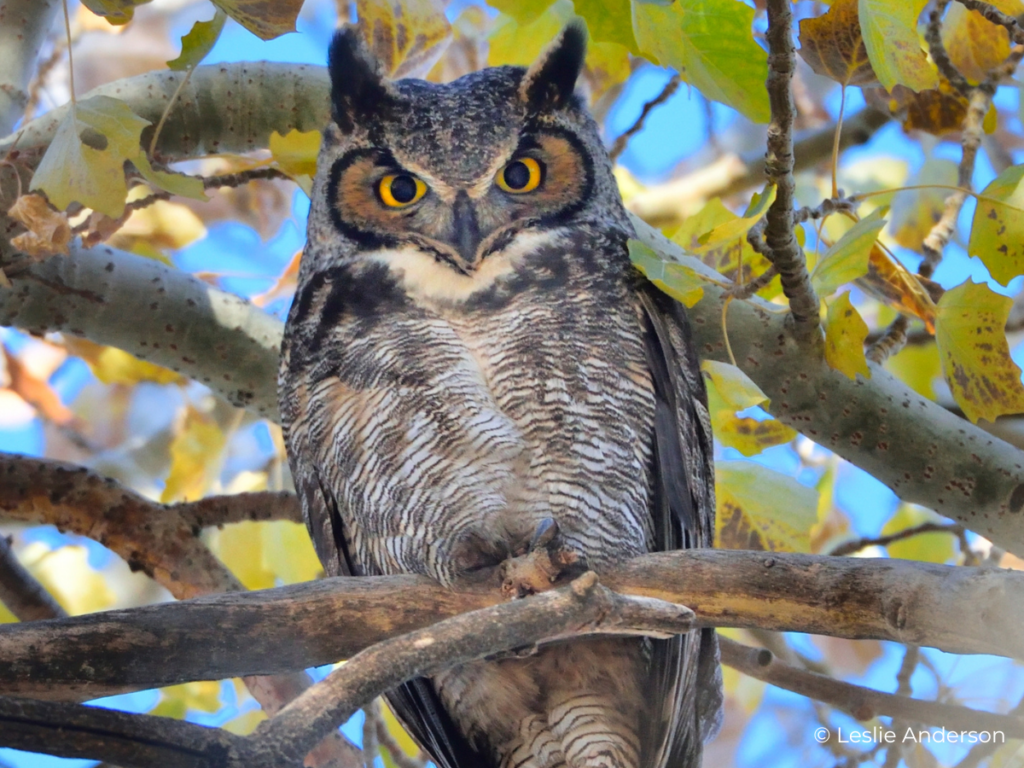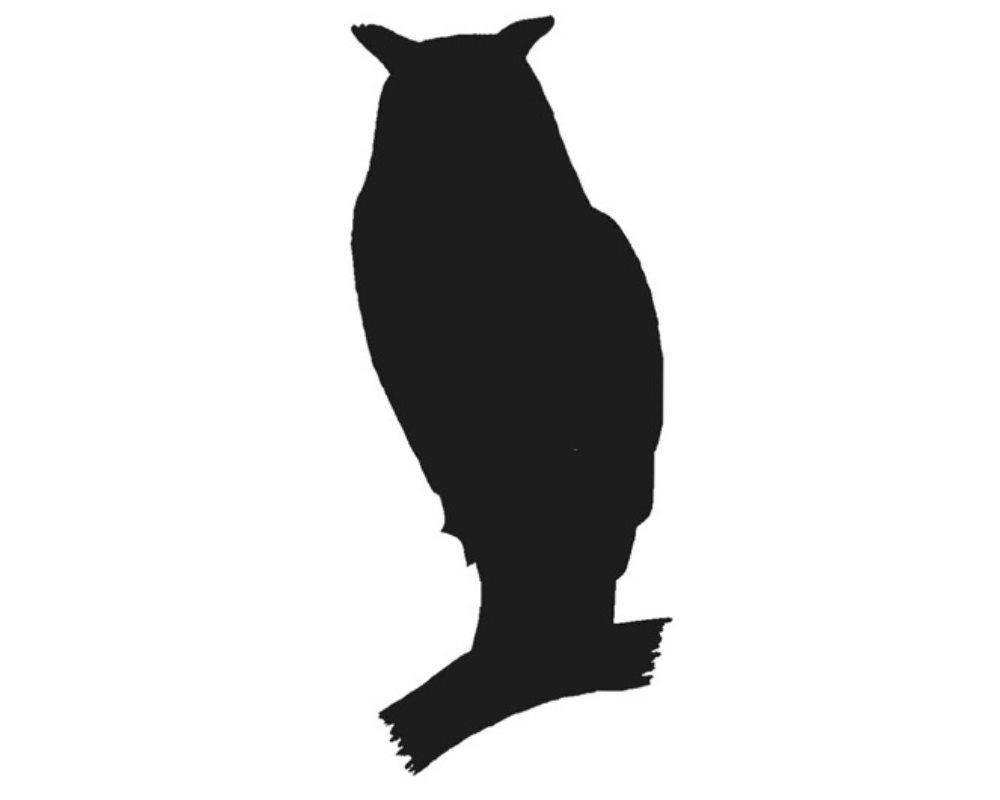Overview
The Great Horned Owl is one of the most common and widespread owls in North America, found all across the continent up to the northern tree line. They occupy almost every habitat type, including deserts, wetlands, deciduous forests, old-growth forests, grasslands, city landscapes, and almost any other habitat. They nest in abandoned stick nests, usually old hawk, crow, raven, heron, or squirrel nests (made of leaves), or aggressively overtake an active hawk or corvid nest before the nest builder has arrived for breeding. They also use cavities in trees, dead snags, buildings, cliff ledges or crevices, and man-made structures, including Osprey platforms, Peregrine Falcon hack boxes, etc. Great Horned Owls sometimes line a nest with bark, foliage, or feathers but often do not perform any nest maintenance. Under any nest is a pile of pellets (regurgitated fur and bone) that confirms its activity.
Great Horned Owls are the most massive North American owl. They may appear smaller in stature at times than Great Gray or Snowy Owls but are heavier and more powerful and even known to prey on them. They have long, ear-like tufts and large bright yellow eyes that easily identify them. Like most owls, their eyes are fixed in their sockets, but they can swivel their heads more than 180° in any direction. Great Horned Owls are nocturnal and possess excellent night vision and hearing to locate prey in near-complete darkness. Great Horned Owls are fierce predators with eagle-like power and use this deadly grip to kill prey nearly twice their weight. However, they have an incredibly diverse diet ranging from small mice, bats, scorpions, rats, gophers, chipmunks, doves, starlings, grebes, rails, and coots to large hares, skunks, geese, squirrels, woodchucks, marmots, prairie dogs, house cats, porcupines, loons, crows, ravens, and other raptors. They also eat reptiles, insects, fish, and frogs when available or in certain habitats.
They sometimes perch out in the open at dusk on fence posts or tree limbs at the edge of a field. But when inconspicuous, they are often found by noisy crows, jays, or chickadees that give their roosting spot away and harass owls for a long while before moving on. Great Horned Owls respond to intruders with bill snapping and hissing, eventually striking with their talons. They are vocal on territory with a deep, soft “hoo-h’HOO-hoo-hoo” heard from dusk ’til dawn. The male and female alternate calls, with the female’s voice slightly higher in pitch. Nestlings give a raspy scream when begging for food that sounds very much like the hissing screech of a Barn Owl, which the call is often mistaken.




